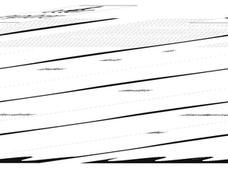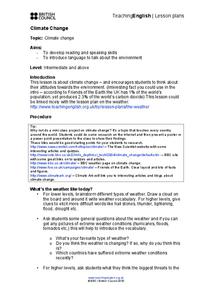National Sailing Hall of Fame
Introduction to Sailboats
The left part of the boat is called what? An informative lesson plan and accompanying slideshow presentation introduce middle schoolers to the terminology and parts associated with a sailboat.
Flipping Physics
AP Physics 1: Kinematics Review
Test takers stressing out over the upcoming exam? Help them prepare for the AP Physics i exam with this fast-paced video that includes a complete guide to everything related to kinematics. Also included are some common errors...
Flipping Physics
AP Physics 1: Work, Energy, and Power Review
Prepare your AP Physics class for the exam with a video that covers work, energy, and power. The quick review also covers common mistakes and test-taking tips that will help your scholars find areas they need to spend more time...
Curated OER
Introduction to Watsonville Wetlands
Identify the different plants and animals found in wetlands, your class will explain the importance of wetland ecosystem and locate the different wetlands in their area.
Flipping Physics
AP Physics 1: Rotational Kinematics Review
A comprehensive review of the rotational kinematics covered by the AP Physics 1 test, this fast-paced video is designed to help scholars review material they have already been taught.
Flipping Physics
AP Physics 1: Simple Harmonic Motion Review
Does your class feel unprepared for the upcoming exam? Use this video to review the simple harmonic motion concepts that will appear on the AP Physics exam. While maintaining interest and a fast pace, the presenter not only reviews...
Flipping Physics
AP Physics 1: Universal Gravitation Review
Everything scholars will need to know about universal gravitation in order to be prepared for the AP Physics exam. is provided in this fast-paced video. Test taking tips and common misconceptions are also addressed in the film.
Curated OER
Introduction to Restoration Lesson
Students explore how pollution and invasive plants disrupt the ecosystem. In this restoration lesson students list materials that pollute wetlands, how people can keep them clean and ways in which invasive plants establish.
Curated OER
What Does Earth Day Mean? - Biology Teaching Thesis
Students possible sources of water pollution, and explain the effects that water pollution can have on the food on the food chain. They Name human and other animal (i.e. fish) illnesses that can be contracted from drinking polluted...
Flipping Physics
AP Physics 1: Linear Momentum and Impulse Review
Help pupils review for the portion of the AP Physics exam that covers linear momentum and impulse review with a short video that covers an extensive amount of material.
Curated OER
Investigation 1 - Intro: Living & Nonliving
Third graders distinguish between living and nonliving things.
Curated OER
Candy Chemosynthesis
Students explain chemosynthesis and photosynthesis using candy. In this chemosynthesis lesson, students work cooperatively to create a visual explanation of the chemical equations of photosynthesis and chemosynthesis.
Curated OER
Volatile Volcanoes
Students explore volcanoes. In this cross curricula lesson, students use the Internet to investigate volcanoes. The series of six lesson guides the students in their search for information, thus building research...
Flipping Physics
AP Physics 1: Rotational Dynamics Review
Prepare your class members for the rotational dynamics section of the AP Physics exam with a fast-paced video that reviews all the key concepts and principles. Tips and tricks for the exam and common misconceptions are also addressed.
Curated OER
Earth Science Lesson Plans The Proterozoic Era
Learners explore the Proterozoic Era. In this geologic time periods lesson, students examine the clock of eras charts and listen to a lecture regarding the era.
Curated OER
Let's Roam Together
Students collect information about buffalo and transform their classroom into a wildlife park. For this conservation lesson, students work in groups to research a question pertaining to buffalo populations and habitat...
Curated OER
Climate Change
Students brainstorm types of weather present threats to the world, specifically climate change and the environment. In this climate change lesson, students complete and discuss a set of worksheets about "going green," climate change,...
Curated OER
Yo-Yos, Tow-Yos and pH, Oh My!
Students explore how hydrothermal vents are formed and where they are located on the ocean floor. They study how scientists use CTDs to locate hydrothermal vents.
Curated OER
Geese and Sandhill Cranes of Nebraska
Students gather information on the geese and cranes found in Nebraska. Students explore ways they can help save their habitats. Also, students use additional general information they connect artwork to their research topic.
Curated OER
Feeling Crabby?
Students analyze data to investigate the influence of water depth on size among deep-water crabs. They interpret results from this data, and apply the results regarding appropriate fishery regulations.
Curated OER
Exploring Alaska's Seamounts - Volcanoes, Plates, and Chains
Students examine the formation of seamounts in the Gulf of Alaska. In this seamount lesson plan, student focus on how the Axial-Cobb-Eikelberg-Patton chain was formed. They learn the associated vocabulary, and watch a teacher...
Curated OER
Breaking Away (Or Not...)
Students compare and contrast common reproductive strategies used by benthic invertebrates. They describe the most common reproductive strategies among benthic invertebrates on a seamount, and explain why these strategi
Curated OER
Mystery of the Alaskan Seamounts
Students study seamounts and the processes that form them. In this Gulf of Alaska lesson students interpret data and investigate a hypothesis.
Curated OER
Mapping Seamounts in the Gulf of Alaska
Students describe major topographic features on the Patton Seamount, and interpret two-dimensional topographic data. They create three-dimensional models of landforms from two-dimensional topographic data.























